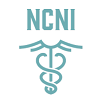Treatment for Spasticity in LA
Spasticity refers to a muscle control disorder characterized by stiff or tight muscles. This continuous contraction is involuntary and can disrupt speech and movement. Reflexes are also known to persist for long periods. For example, an infant may keep his or her hand clenched tightly.
Spasticity results from damage to the spinal cord or the region of the brain responsible for controlling voluntary movements. This leads to an imbalance of signals between the muscles and the nervous system. Spasticity affects the joints and muscles of the extremities and is particularly harmful to children.
According to the American Association of Neurological Surgeons, spasticity affects more than 12 million people globally. Conditions that lead to spasticity include stroke, meningitis, spinal cord injury, traumatic brain injury, encephalitis, Lou Gehrig’s disease, phenylketonuria, and adrenoleukodystrophy.
Spasticity can range from a mild feeling of tightness in the muscles or severe, uncontrollable, and painful spasms at the extremities; usually the arms and legs. The condition can also cause pain and tightness around the joints as well as the lower back.?
Adverse effects of spasticity include muscle fatigue, joint and muscle deformities, muscle stiffness, muscle spasms, and more. Additional complications include chronic constipation, pressure sores, urinary tract infections, and other systemic illnesses.
There are several treatments available for spasticity and are carried out based on factors including the severity of the condition, the underlying cause, and the age of the patient. The common goal of each treatment is to reduce the frequency and pain of muscle spasms, relieve the symptoms, improve hygiene and gait, reduce caregiver challenges, enable normal muscle growth, and improve motor functioning.
Dr.Farzin Pedouim is a board certified neurologist based in Huntington Beach and Los Angeles. He highlights an effective occupational and physical therapy plan, prescribes oral medications, and also administers Botox injections to reduce the intensity of muscle spasms.
